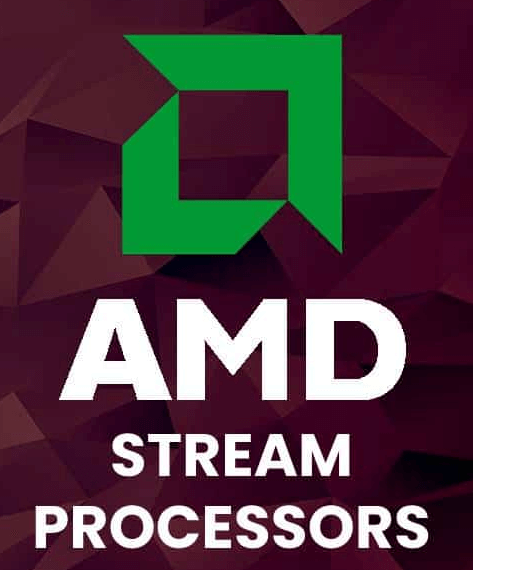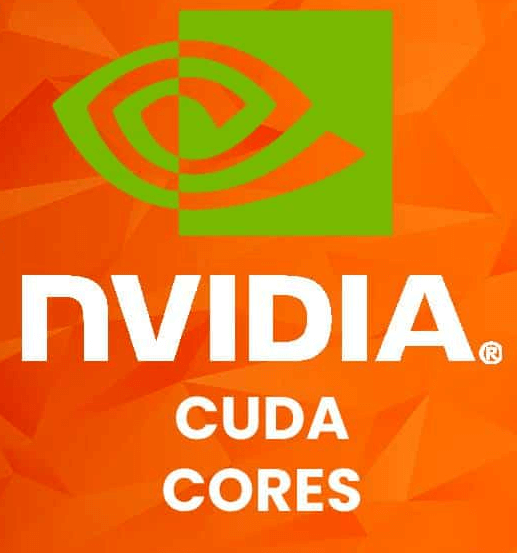So if you want to learn more about Cuda cores and stream processors, here you will get all the important information. From the fundamentals to a comprehensive comparison, we have included everything. So make sure to read it till the end.
What Are AMD Stream Processors and NVIDIA Cuda Cores?
NVIDIA has developed a parallel processing platform, which is called Cuda, as well as Compute Unified Device Architecture. As you know, CPUs come with various cores such as dual-core, quad-core, hexa core, and octa-core. These cores help the CPU handle information; that’s why more cores mean better performance. Now Cuda cores function in a similar fashion to CPU cores, but instead of CPU, they are present in the GPU. The main difference is that CPU cores are typically countable, whereas a GPU can contain thousands of Cuda cores. Stream processors are similar in terms of the purpose, but they are developed by AMD; that’s why they are called AMD stream processors. The technical term that is used to refer to the NVIDIA Cuda cores and AMD processors is the pixel pipeline.
What Do AMD Stream Processors and NVIDIA CUDA Cores Do?
In simple words, NVIDIA Cuda cores and AMD stream processors process all the data and information that is given to the GPU. They function by simplifying the software and hardware parallel processing, and they are responsible for handling the traditional GPU-focused tasks. For example- NVIDIA Cuda cores and AMD stream processors will perform the game graphics calculations and tasks like rectifying complex lighting, sketching role models, rendering in-game scenery, etc. Though both technologies have architectural differences, their fundamental function is somewhere similar.
Differences Between AMD Stream Processors & NVIDIA CUDA Cores
VS As multi-core units, both NVIDIA Cuda cores and AMD processors prove to be outstanding in performing parallel programs. But size is one of the main factors that differentiate one from the other. NVIDIA Cuda cores generally come in a bigger size and are slightly complex, whereas AMD Stream Processors are smaller and simpler. Apart from this, the frequency that NVIDIA Cuda cores run is much higher than the AMD stream processor. That’s why it is not fair to judge both based on the processors’ count. Another difference between NVIDIA CUDA Cores and AMD Stream Processors is the architecture they use. The NVIDIA CUDA Cores are preferred for general purpose as it doesn’t perform heavy optimization and allows the card to assign the cores as per the requirements at the runtime. On the other hand, the AMD Stream Processors excels at optimization. Though both cards have a decent following, NVIDIA puts extra effort into providing developer support. For NVIDIA, there is a huge availability for code snippets, libraries, and developer resources, which is the reason why developers love it so much.
Do The Number of and AMD Stream Processors & NVIDIA CUDA Cores Make A Big Difference
One thing you should know that AMD stream processors and NVIDIA Cuda cores do not have the same power, which means a graphic card with 100 Cuda cores won’t provide the same performance as a graphics card with 100 stream processors. Coming back to the question, yes, the number of AMD Stream Processors and NVIDIA CUDA Cores can make a big difference. More Cuda cores and AMD stream processors will provide better, clearer, and more realistic graphics. In other words, if both cards fall under the same family or have the same architecture, one with more Cuda cores will excel in most areas.
Comparing Cards
You should understand that comparing GPUs with NVIDIA Cuda cores and AMD stream processors is a complicated process as both companies build different architecture for their cards. So even if you have two graphics cards with 600 Cuda cores, and 600 AMD stream processors, it’s not necessary that both will provide the same performance. Not only this, but NVIDIA and AMD develop different architectures for their different cards based on the generation line. So you should not think that all the AMD or NVIDIA cards will have the same architecture. Though it is possible for cards that fall under the same series and have a similar architecture. But if you want to compare cards from different companies, we would suggest running performance tests to get a better comparison.
Measuring The Difference
There are a lot of factors that affect the performance of a GPU, which is the reason why we can’t compare a card based on the number of Cuda core and stream processors present in it. In these scenarios, benchmarking tests are perfect to reveal the performance of a GPU. Apart from this, driver support also plays a huge role in determining the performance level of a graphics card. For example- if you an AMD graphics card and an NVIDIA graphics card and both of them have similar infrastructure and power. Even in this case, one graphics card would perform better than the other as it all depends on the game that you are playing. If that game offers better drive support for AMD graphics cards, then the NVIDIA graphics card won’t provide the same performance as AMD’s.
How Many CUDA Cores Equal a Stream Processor?
There is no specific answer to this question as it’s nearly impossible to equate Stream processors and Cuda cores. For example- if you have a graphics card with 400 AMD stream processors and a graphics card with 300 Cuda cores, you cannot say that the former will be more efficient and powerful. As mentioned above, the best way to find out the winner is by using real-world gaming benchmarks. So run the card through the test, and whichever scores the best frame rate would be the powerful option.
Conclusion
At last, we want to tell you that both these processors are developed to do the same thing, but their working and operating fundamentals are different. NVIDIA and AMD are big tech companies, and they keep modifying the shape and appearance of their products to ensure better usage. So if you are a regular user, you should not bother about these things. However, hardcore gamers and professional techies can use third-party benchmarks to compare both processors more efficiently. Hope this article will clear some of your doubts and queries. Comment * Name * Email * Website
Δ







![]()